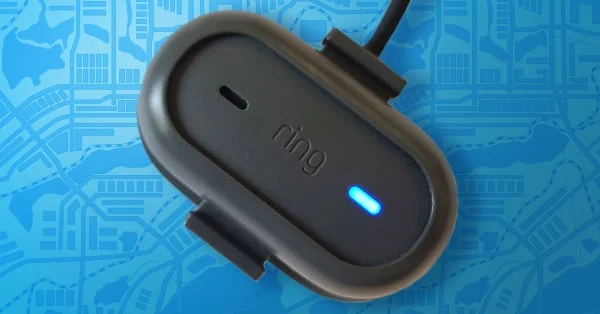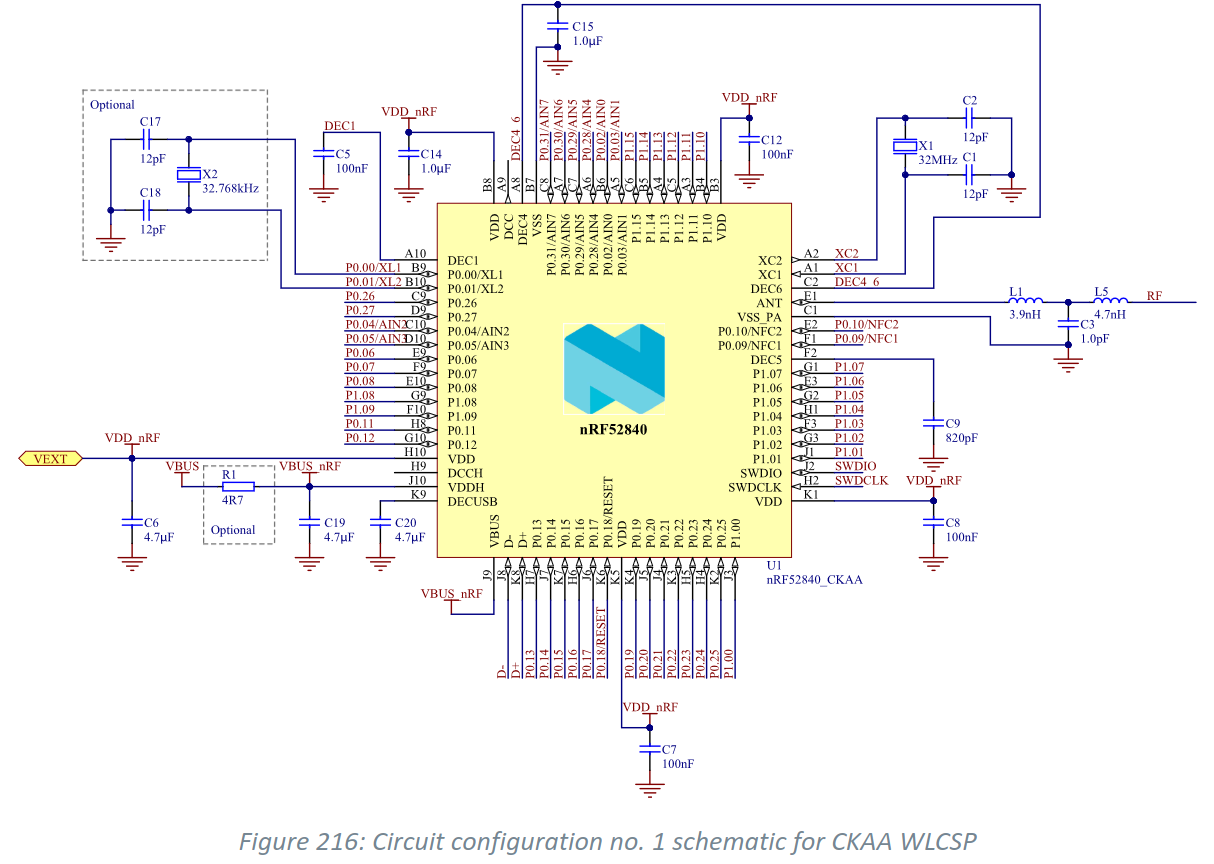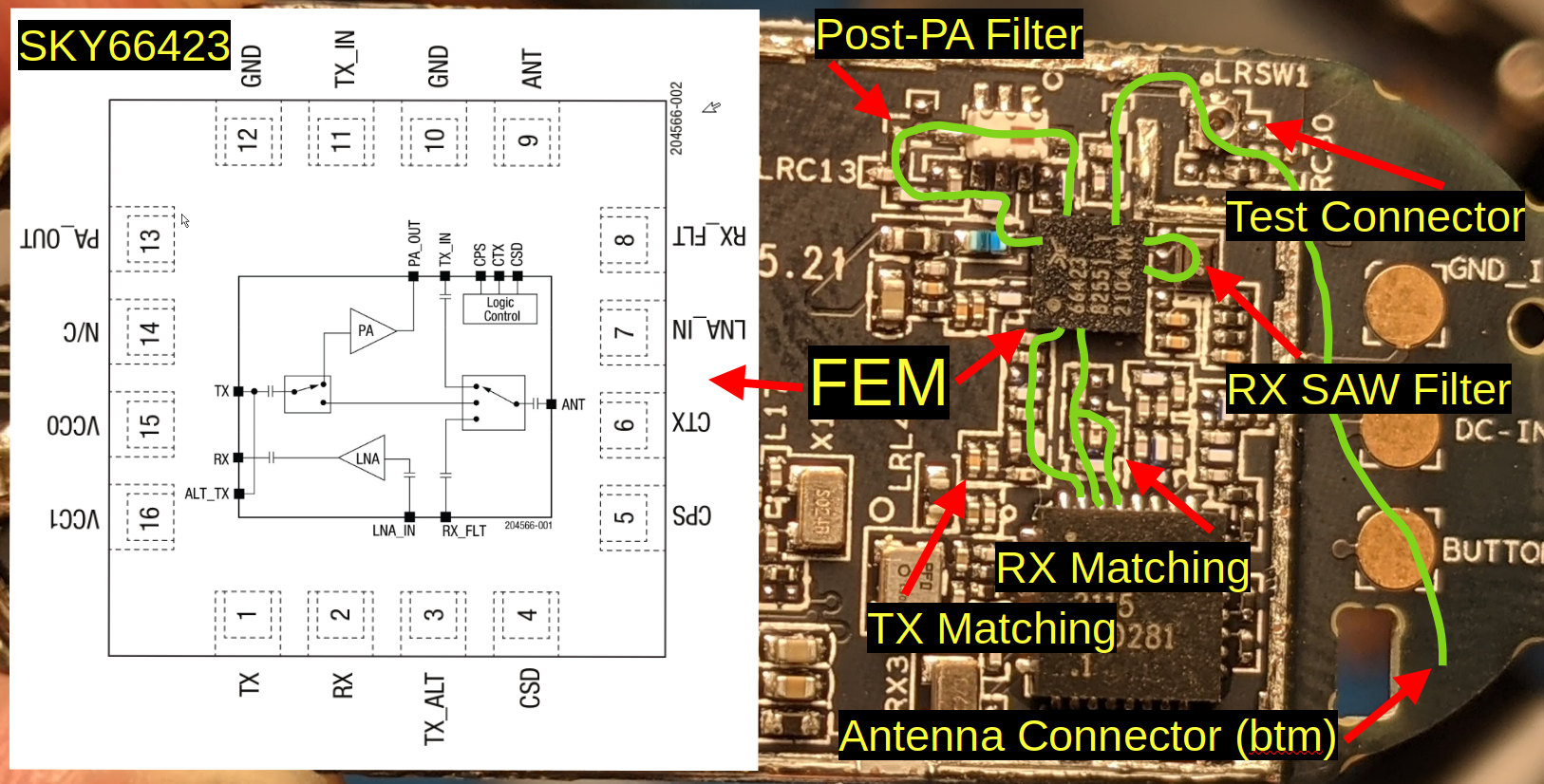Amazon Project Sidewalk
2024
Sidewalk is Amazon's solution to the problem of costly backhaul in IOT devices. I was unable to find a concise summary of how Sidewalk worked on the RF side, so I decided to sign up for a free devkit, try it out, and write my own overview.
Bluetooth works well for short range communication as Apple's Airtag system shows, and it seems that Amazon plans for Sidewalk devices to use bluetooth if it is available. Bluetooth does not work well for long rang (>1000 ft) communication, though, which is why Sidewalk is also designed to use FSK and LoRa modulation in the 900 MHz band. When operated at low data rates, LoRa modulation is extremely robust meaning that Sidewalk should work in almost all urban and suburban areas of the United States. 900 MHz FSK is also supported presumably to allow legacy and cost-sensitive designs without LoRa support to interface with the network.

Amazon Sidewalk Development Kit. Image from Semtech
Sidewalk works by using Amazon's vast fleet of customer purchased smart speakers and home automation devices as listening stations. Amazon has been shipping products with sub-1GHz transceivers since 2018:
A comprehensive list of Sidewalk devices includes: Ring Video Doorbell Pro, Ring Floodlight Cam (2019), Ring Spotlight Cam Wired (2019), Ring Spotlight Cam Mount (2019), Echo (3rd gen and newer), Echo Dot (3rd gen and newer), Echo Dot for Kids (3rd gen and newer), Echo Dot with Clock (3rd gen and newer), Echo Plus (all generations), Echo Show (2nd gen), Echo Show 5, 8, 10 (all generations), Echo Spot, Echo Studio, Echo Input, Echo Flex.
The bandwidth required to backhaul Sidewalk data is negligible (and capped at 80 kbps with a maximum of 500 MB per month) to anyone on a modern non-data capped interconnection, so most customers will not even realize that their devices are being used as receivers for Sidewalk. Amazon has also made the system opt-out, so concerned customers are able to elect not to participate in this system.
It seems that as of April 2024 Amazon is still working on growing third party use of Sidewalk. The network was opened up to developers in April 2023. and there are now a few articles about companies planning to use Sidewalk and there are a few development boards now available from third parties, but as far as I can tell the network is still pretty underutilized. While in general I like the idea of Sidewalk — a low cost low power ubiquitous backhaul service for small amounts of data — I do hope that it doesn't begin to be used for more 'evil' purposes like collecting analytics data from smart TVs not connected to WiFi.
Dev Kit
Amazon is currently shipping a version of the Ring Fetch (designed to track dogs) as a "development kit" for sidewalk. I put development kit in quotes because all you can do with the dev kit is use it as a tracker. It transmits its location (as derived from an internal GPS unit) every 10 seconds as long as it has power. You can then view the resulting data through a dashboard that shows you time, location and link quality. If the internal GPS does not have a fix (it is not a very good receiver), the time and link quality is still recorded. You can download this data as a CSV and plot it on your own.
My speculation is that Amazon is providing the dev kits for free in order to improve their coverage maps and to raise general awareness of the capabilities of the system among hardware engineers (like me) who may be considering designing it into products in the future.
Teardown
The Fetch board (FCC ID 2AEUP-BHAGF001) can be roughly divided into four sections: Bluetooth modem / SoC, LoRa modem, 900 MHz Front-end, and GPS.
Amazon Sidewalk Development Kit PCBA
Bluetooth SoC
An nRF52840 Bluetooth capable System-on-Chip lives in the northwest quadrant of the board. This chip presumably runs the show and controls the rest of the peripherals. The FCC test reports list that the software version used for test was nordic-diagnostics-images-1.2.0.5. It appears that some sort of ceramic or SAW filter is used for filtering the output. This is not part of the reference design and is likely required because other RF transmitters are located on this board. If this filter were not here, the bluetooth modem could receive enough out-of-band noise whilw the LoRa modem is transmitting that it is effectively jammed. It is also possible that, without this filter, the board could produce unacceptable intermodulation products when both modems transmit at the same time. If enough of the 900 MHz signal gets into the power amplifier for the bluetooth modem, there will be intermodulation products at the sum and differences of these frequencies (2.4-0.9=1.5GHz and 2.4+0.9=3.3GHz). These out of band emissions would cause the product to fail FCC certification.

nRF52840 Reference design from the part's datasheet
LoRa & FSK Modem
The LoRa & FSK transceiver is a LR1110 and is located in the southwest quadrant of the board. Its maximum output power is 22 dBm (160 mW), and the chip supports FSK, 4-FSK, and LoRa. The benefit of LoRa over FSK is that it allows for improved link budgets and resistance to interference at the expense of greater bandwidth. Described very roughly, in LoRa modulation ones and zeros are encoded as up and down chirps rather than shifting the carrier frequency up and down on a per bit basis as is done in FSK modulation. This difference is particularly important at low bit rate. With FSK (assuming you're trying to be bandwidth efficient), your bandwidth is equal to about twice your data rate, so a 100 bps transmission will occupy about 200 Hz. This presents a problem, though: in order to receive this signal, you need an oscillator with a frequency tolerance better than, say, 20 Hz. At 900 MHz, 20 Hz frequency accuracy requires a 22 ppb frequency accuracy which means that normal TCXO references will not have sufficient accuracy. You can barely achieve that kind of performance with an OCXO, so you can't practically achieve the theoretical sensitivity of very narrow band FSK with cheap IoT devices. Since LoRa spreads the signal across a much wider frequency range, you can get away with a much lower performance oscillator. LoRa claims no sensitivity degradation with as much as a 25% (of the transmit bandwidth) offset between TX and RX. If you don't care about being spectrally efficient, you can use a low bit rate and a high deviation to work around the limitations of your crystals. This is what was done with POCSAG pagers: 512 bps data is FSK modulated +/- 4.5kHz to produce a signal that requires 25 kHz wide channels.
This particular chip supports a cursed form of GPS where it sends the measured pseudoranges to a back end server god-knows-where that then completes the GPS solution and sends the calculated position back to the device. This functionality does not seem to be used here since there is a dedicated GPS, however. Wearing a third hat, LR1110 also supports passive WiFi sniffing which it uses to determine the MAC addresses of nearby wireless access points. This information can also be sent to a server to better determine device location (or in absence of GPS, roughly determine location from WiFi alone).
While the maximum output power of this chip is 22dBm on its high power output path, the Fetch board uses the "high efficiency" +15dBm output path instead. The FEM provides 29dB of gain, so the LR1110 is likely set to something like -1dBm output power.
Front End Module
The SKY66423 FEM amplifies the signal from the LoRa and FSK transceivers . The maximum output power of the FEM is 27 dBm (500 mW) which aligns with the measured power of ~470 mW in the FCC Report. Beyond increasing transmit power, the FEM also improves the receive sensitivity of the transceiver.

RF Paths on Amazon Sidewalk Development Kit PCBA
The excellent sensitivity numbers in the LR1110 datasheet are only true when there are no other strong signals applied to the chip. In practice, if you operate this transceiver chip without a band selective filter, it will be significantly desensed if there are other strong signals in 150-960 MHz. In a city, this can amount to a lot of power; in this range of frequencies you will find pagers, police radio, TV, cell phone towers, and more. To avoid this, you need to use a bandpass filter, and that is what was done: there is a SAW filter connected between the LNA_IN and RX_FILT pins of the FEM meaning that its LNA only sees power in the passband of the filter. If the out-of-band signal is strong enough, without this filter even the LNA`s apparent noise figure (in addition to the performance of LR1110) could degrade due to the presence of the out-of-band blocker signal. This is fundamentally what 'desense' means: due to the presence of some other strong signal, the receiver is not as sensitive as it should be and it performs as though it is receiving a much weaker signal.
The benefit of using the LNA in the FEM instead of routing from the SAW filter directly to the LR1110 is that the LNA in the FEM amplifies the signal right at the output of the SAW filter before the loss of the matching components for LR1110's RX input — loss before the first amplifier in an RF receiver adds to the system noise figure which means that the sensitivity of the receiver is proportionally reduced. The LNA in the FEM may also have a somewhat lower noise figure than the LNA inside LR1110 which would further improve receiver sensitivity.
GPS
The GPS seems to be a Sony CXD5605AGF. It does not have terribly good performance on this product, but that is likely due to a poor antenna design or issues with the matching components. The specified cold start sensitivity of -147 dBm is pretty typical for this sort of part.
Observations
Transmitted Data
At the moment, the dev kit seems to be hard coded to transmit 500Khz bandwidth LoRa messages at 923.3 MHz every 10 seconds. I haven't seen it do anything else. This means that the devkit transmits without knowledge of what is available to receive it. There is also no off-button, so there is no way of disabling it from transmitting aside from letting the battery run out.

Typical Transmission from Sidewalk Development Kit
Spectrum Useage
There are several FCC test reports available for the dev kit covering 900 MHz LoRa and FSK operation as well as 2.4 GHz bluetooth. The bandwidth in the test report is lower (125 kHz) than I measured (500 kHz), but I am no expert on what is required for certification in the ISM band. For both FSK and LoRa modes, the stated frequency range is 902-928 MHz which exactly corresponds to North American 900 MHz ISM band.
Amazon Sidewalk Development Kit Test Report for FSk operation
Coverage
Coverage is crazy good. While it is spotty at ground level in rural areas, coverage is near continuous in cities and suburban areas. I would wager that coverage is now on-par with LTE in dense cities which would allow Sidewalk to potentially replace LTE as the communication standard used by devices like rental scooters. I specified ground level in rural areas because line of sight is much more important than distance. Since there isn't an off-button on the devkit, I couldn't put it into "airplane mode" before a flight. It never got a GPS fix on the plane, but it was still received along most of my flight path from Seattle to New York.
Sidewalk Reception on SEA->JFK Flight
Since I didn't have location from Sidewalk due to it not having a GPS fix, I added location to the received packets by correlating their time stamps with data from Flight Aware using a simple VLOOKUP equation. The interval for most of the flight aware data is 30 seconds and the interval for the Sidewalk data is at most 10 seconds, so many locations have three or mode packets associated with them. I then imported this correlated data into Google Earth Pro for plotting and color coded the points based on link quality.
Mapped Sidewalk Reception on SEA->JFK Flight
Google Earth Pro (which is free) has a great data import feature. I am not sure when it was added since I don't remember it being there eight years ago, but it sure beats having to use a Python script or third party software to convert csv coordinates to KML. It even handled altitude data without issue.
Sidewalk Link Quality while Landing at JFK